Images from the front lines of Tijuana’s deadly drug war
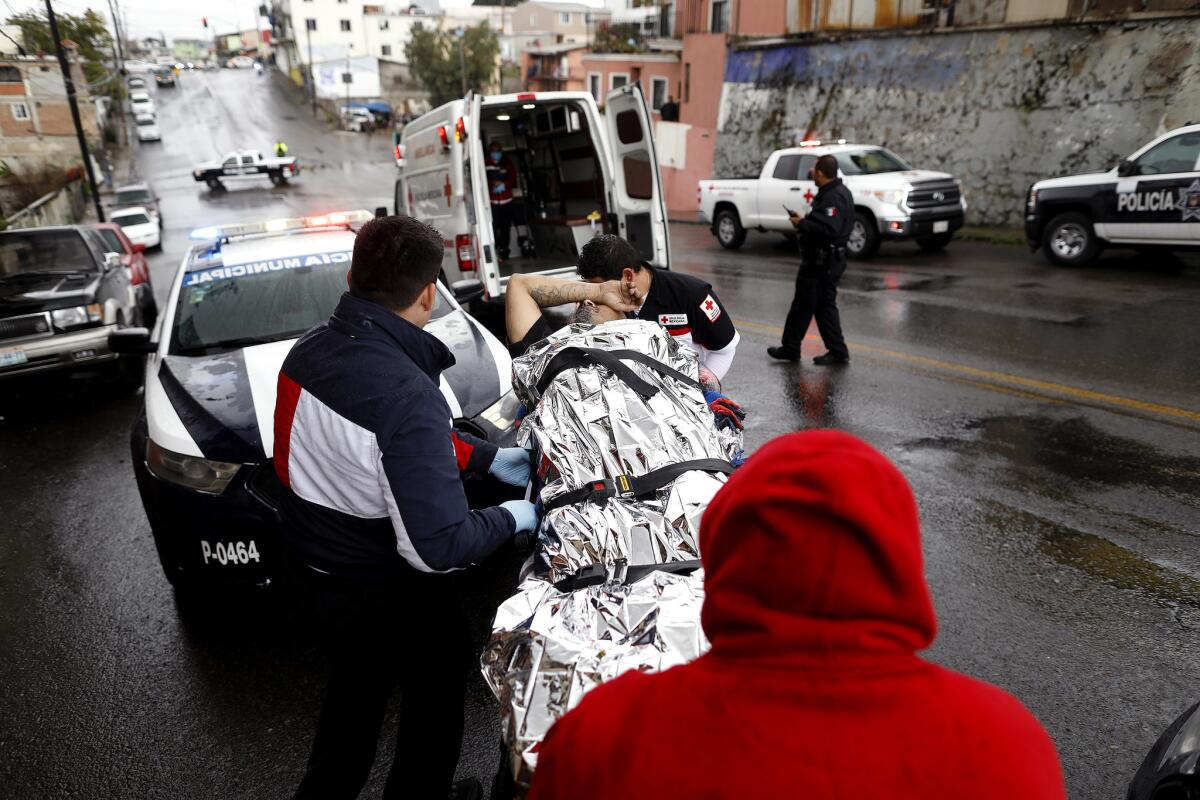
- Share via
A record 2,518 people were killed in Tijuana in 2018, making it one of the most violent cities in the world.
The killings are overwhelming the city’s paramedics, law enforcement authorities and workers at the overcrowded morgue, where at times bodies have ended up stacked on the floor.
Driving the violence is an entirely different kind of drug war from the one immortalized in films and narcocorridos.
While in the past the violence was driven by cartel battles over lucrative drug trafficking routes to the United States, now low-level dealers are dying for control of the city's growing local drug market.
Officials say one drug is to blame: Crystal meth.
Meth and murder: A new kind of drug war has made Tijuana one of the deadliest cities on Earth »
Mexicans started producing cristal en masse after it became difficult to make in the United States because of increased regulation of the precursor chemicals.
After the Sept. 11 terrorist attacks, increased border security made it harder for cartels to move drugs across the border, so they began paying local gang affiliates in Tijuana in drugs, which ended up on the street. The flood of cheap drugs has created a brutal marketplace, where users are killed for not paying dealers, and dealers are killed for selling on the wrong block.
“We’re at war,” said Jesus Escajadillo, a medical examiner at Tijuana’s morgue. “We are living through a civil war.”
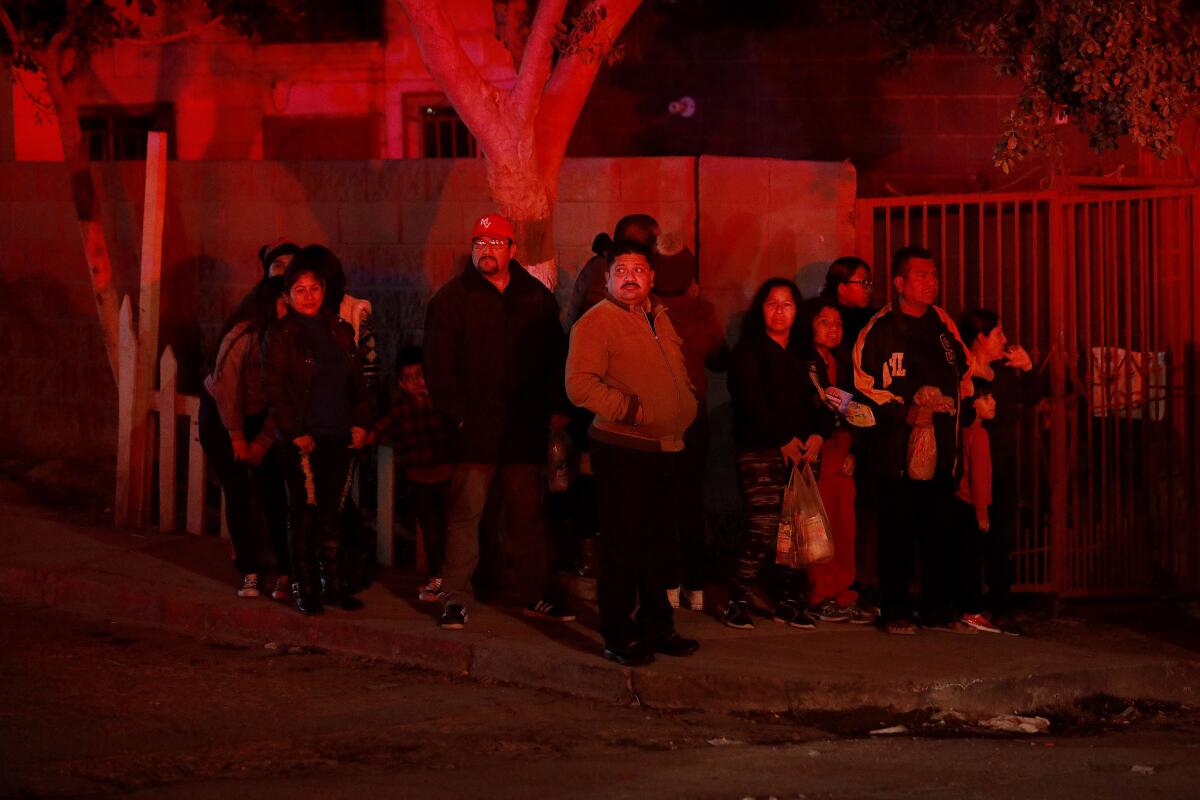

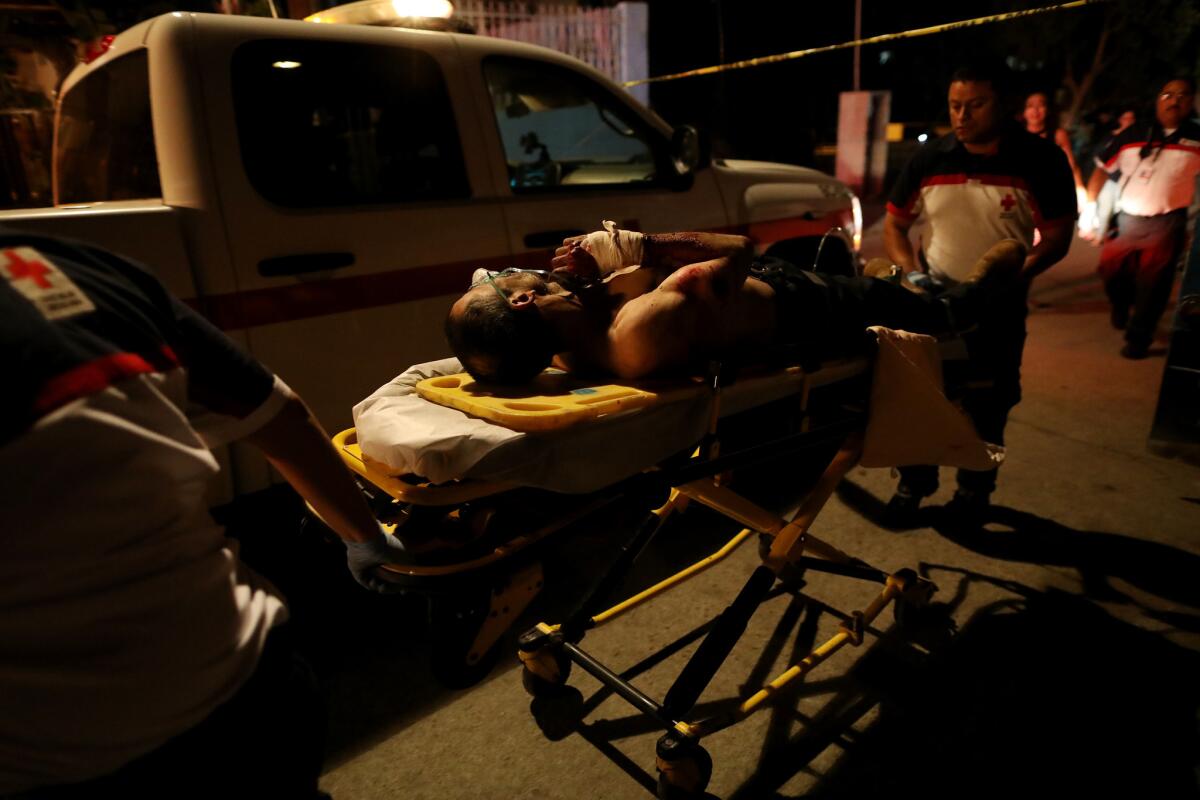
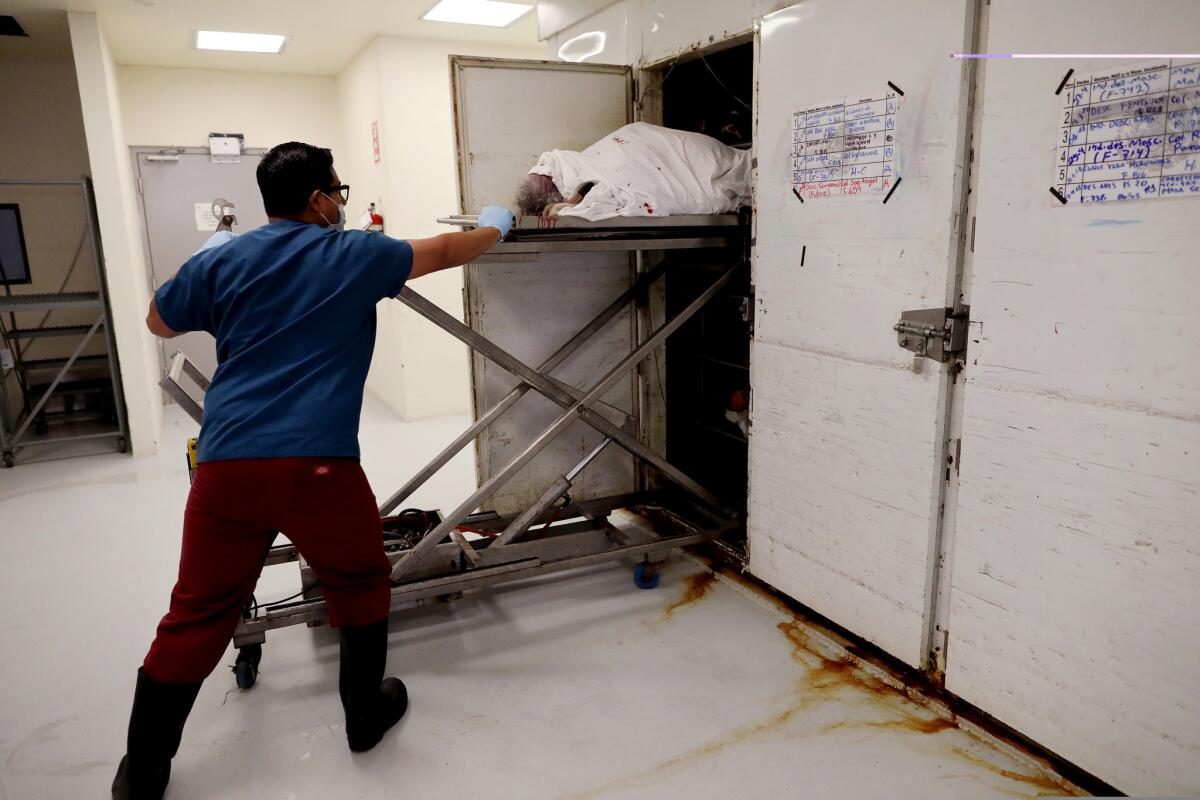

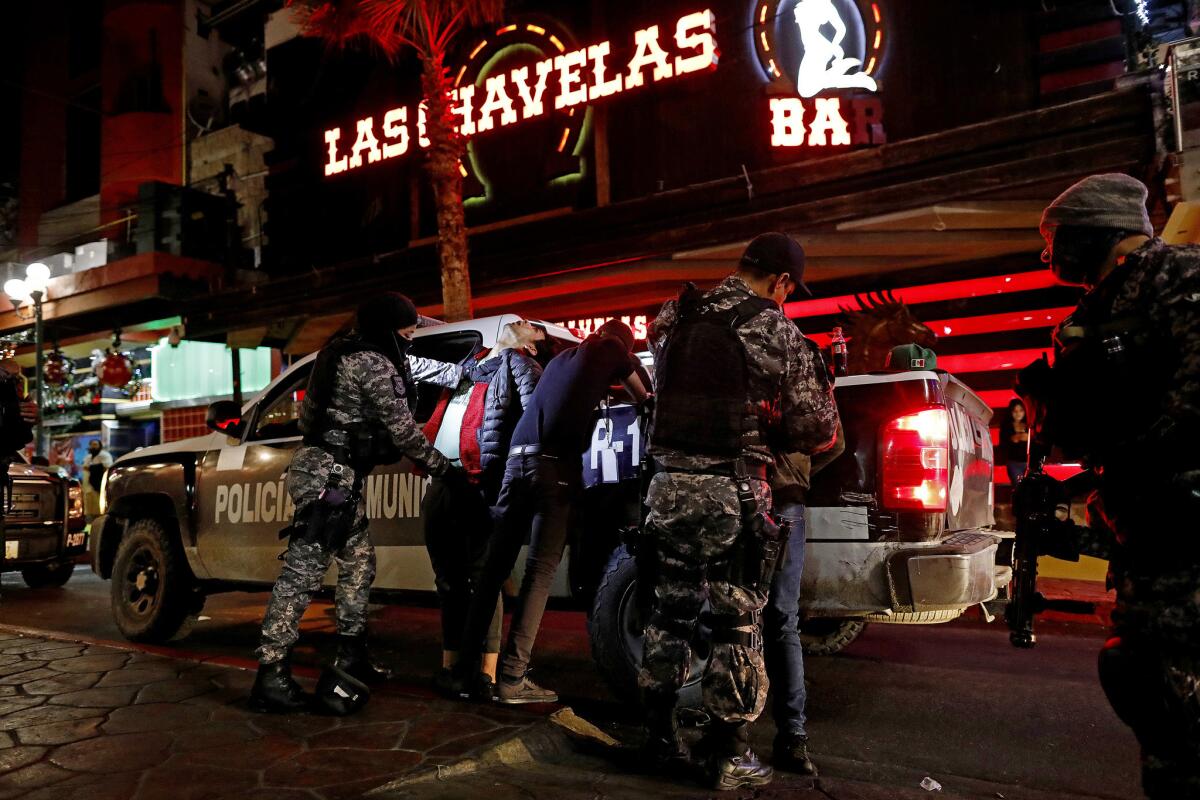
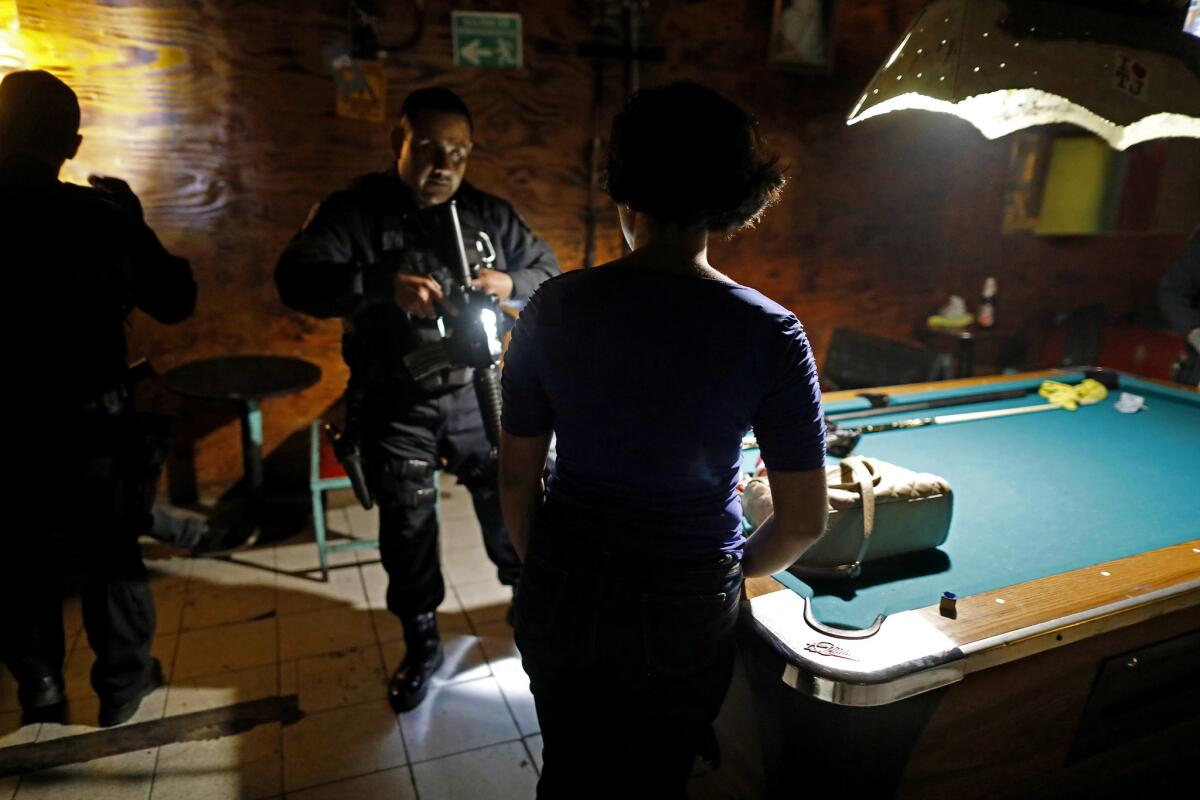
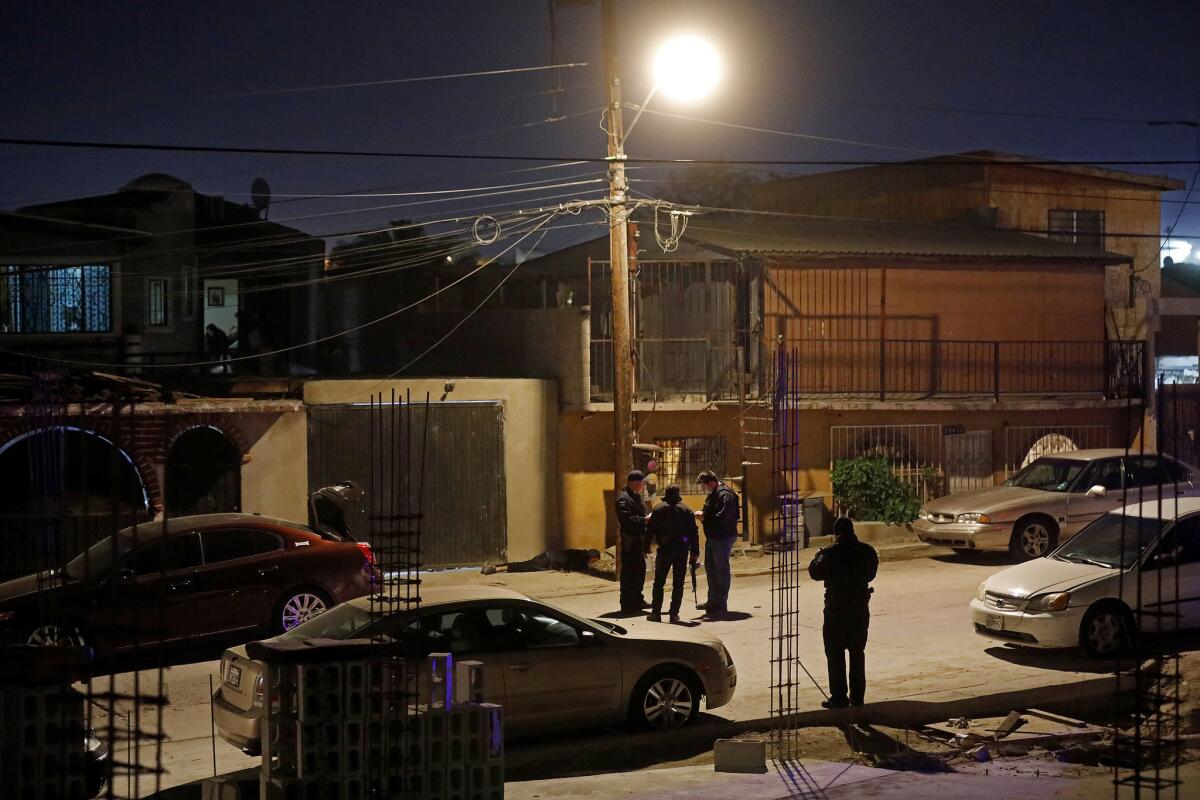
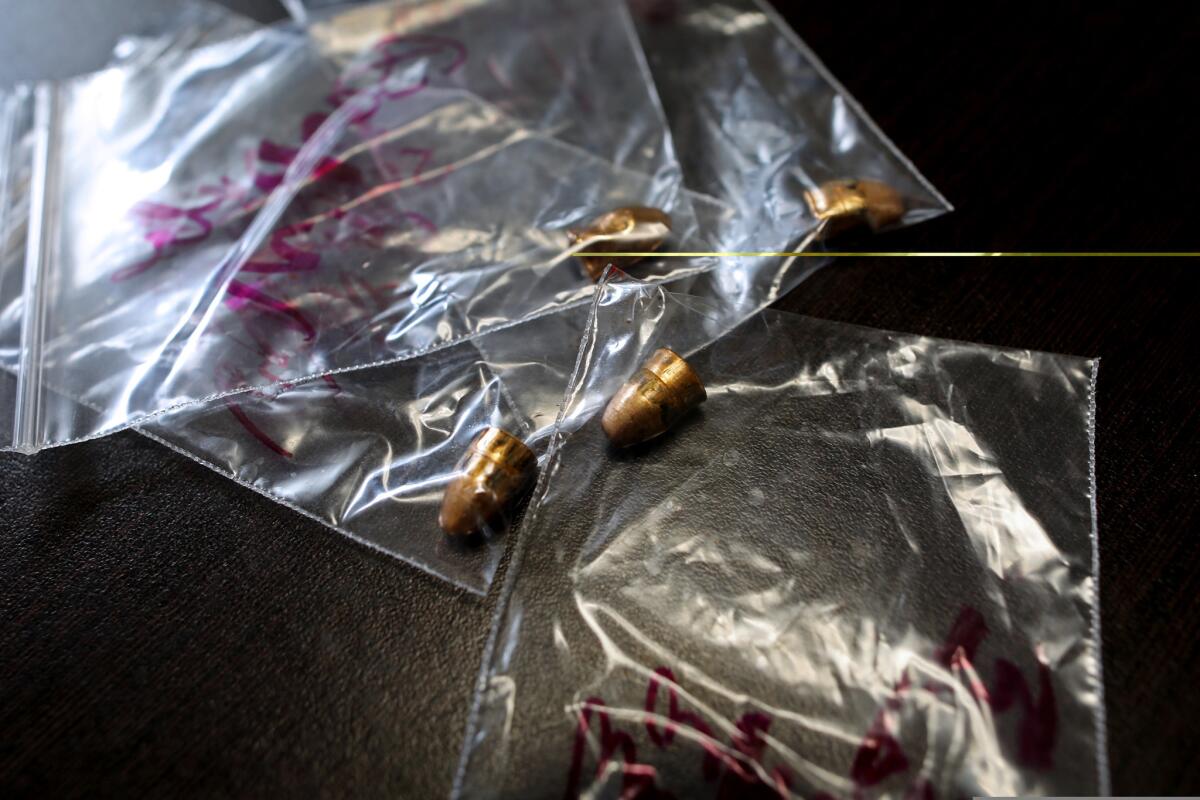
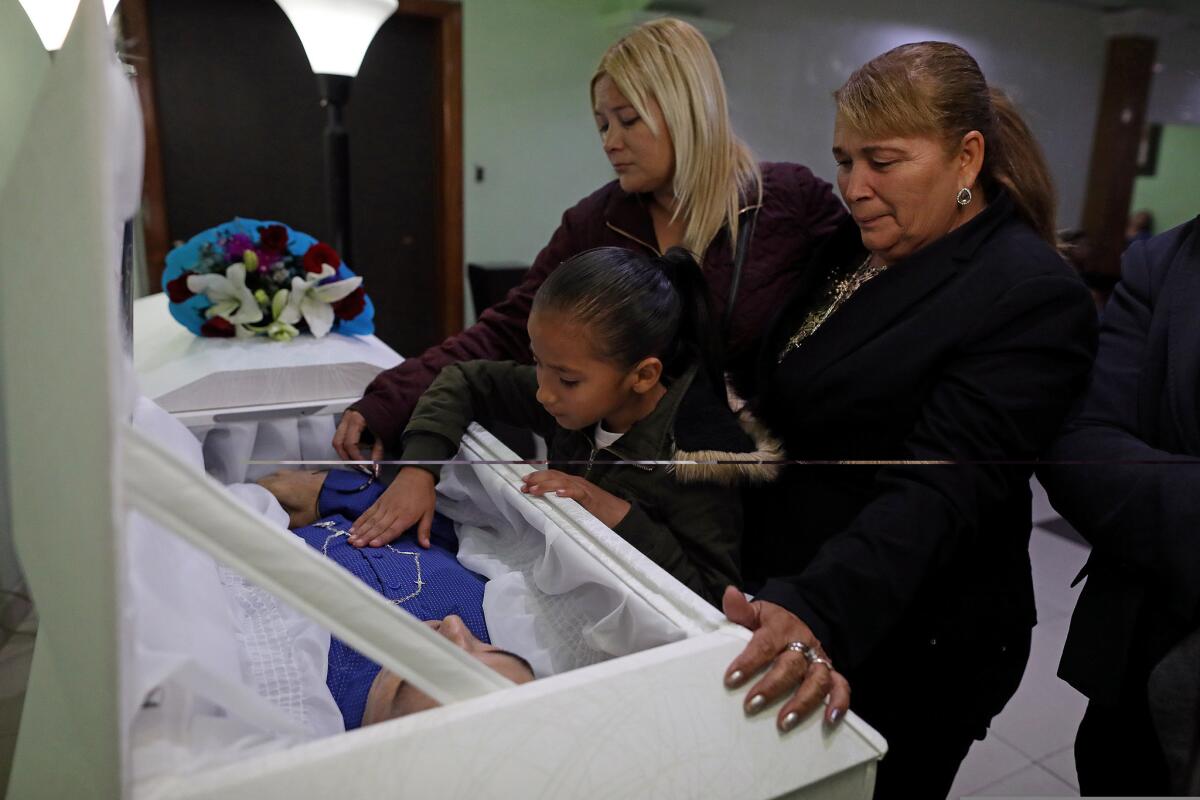
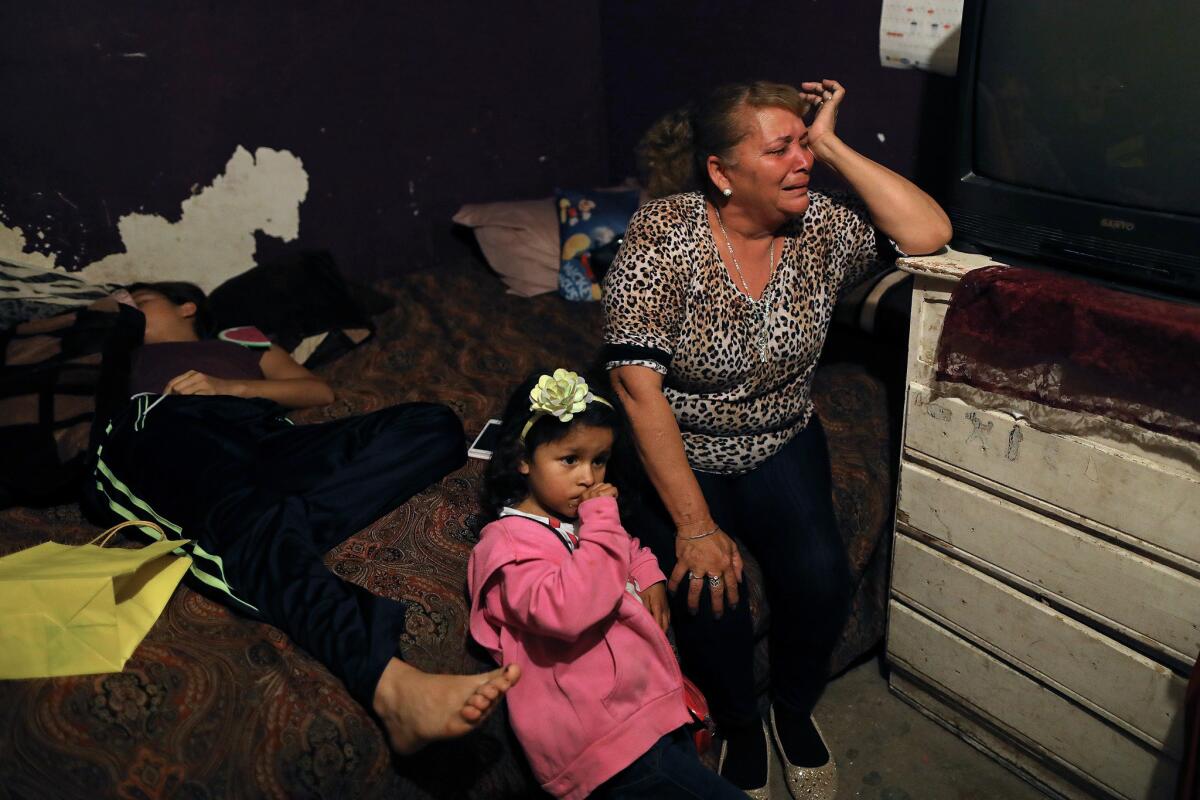
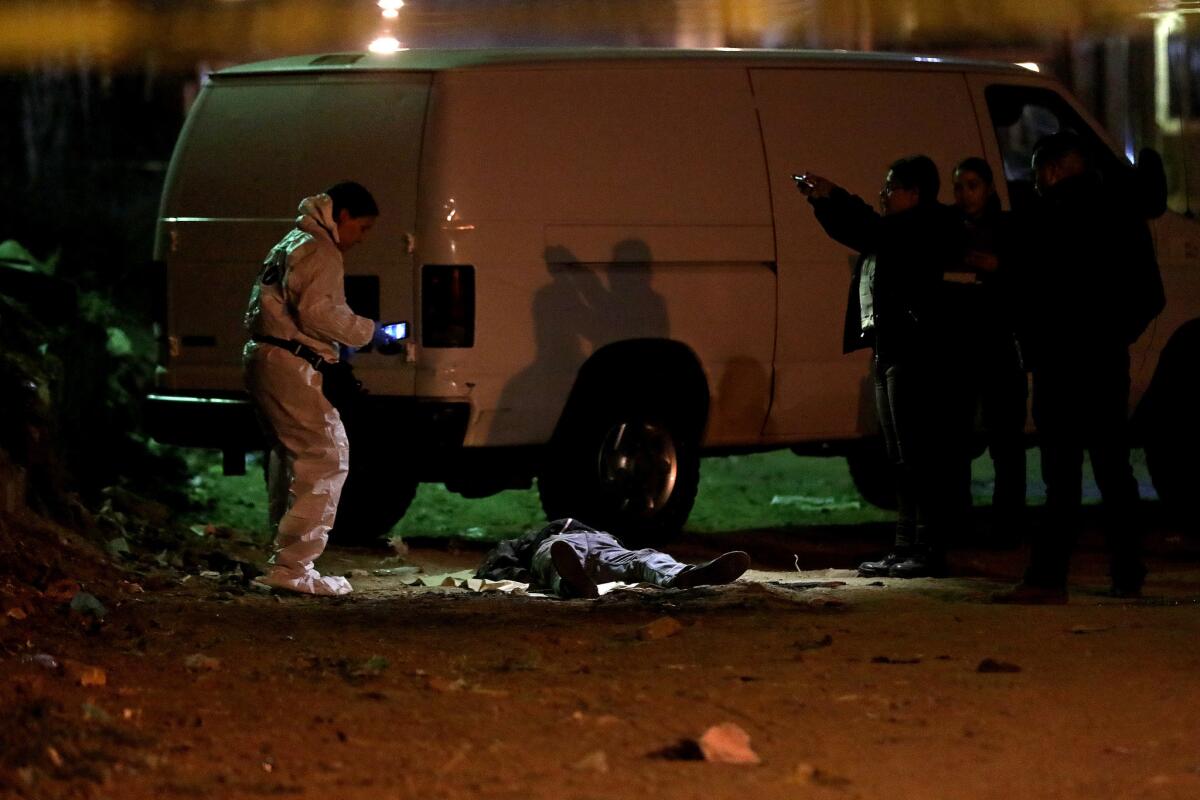
Sign up for Essential California
The most important California stories and recommendations in your inbox every morning.
You may occasionally receive promotional content from the Los Angeles Times.









